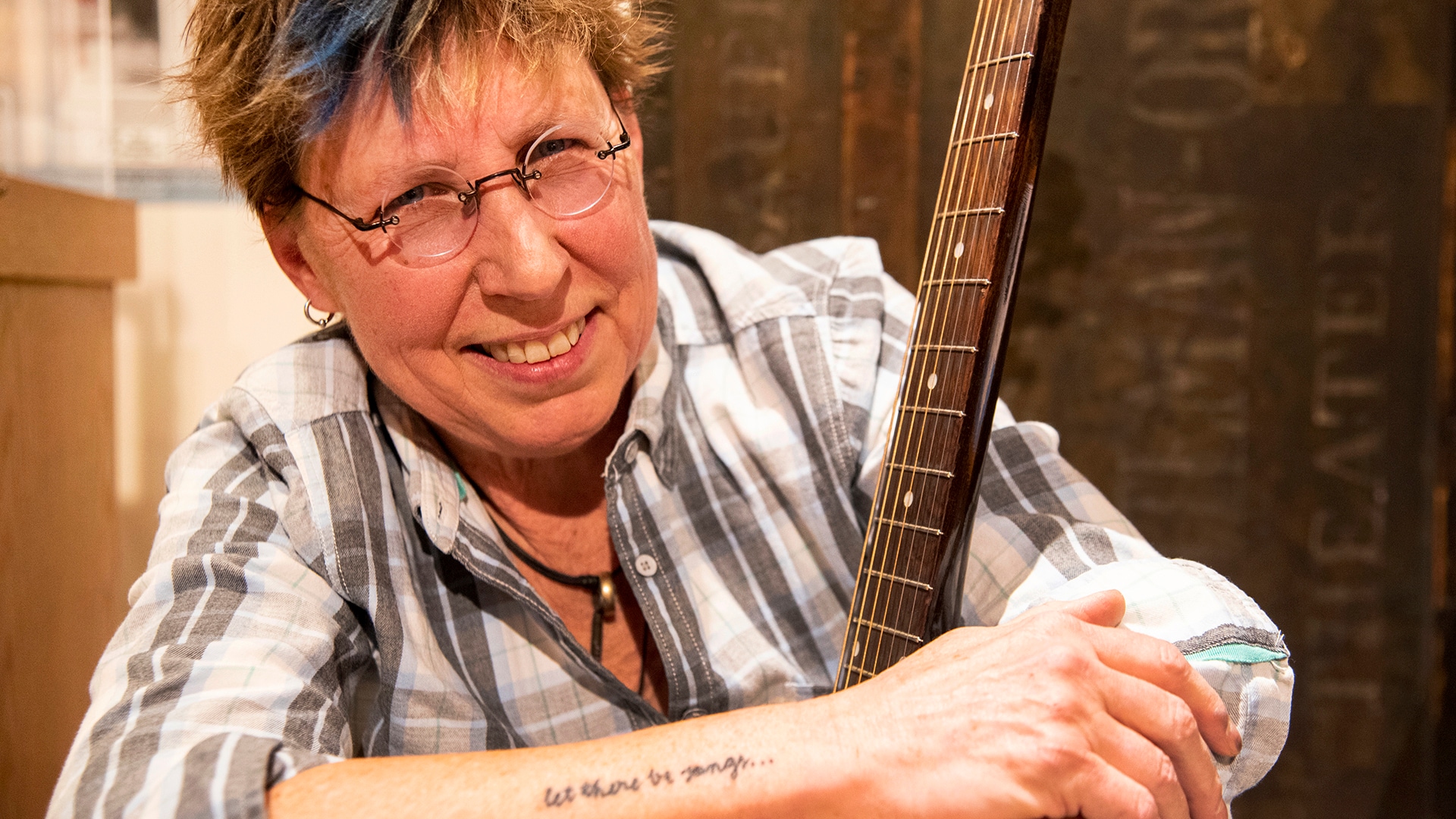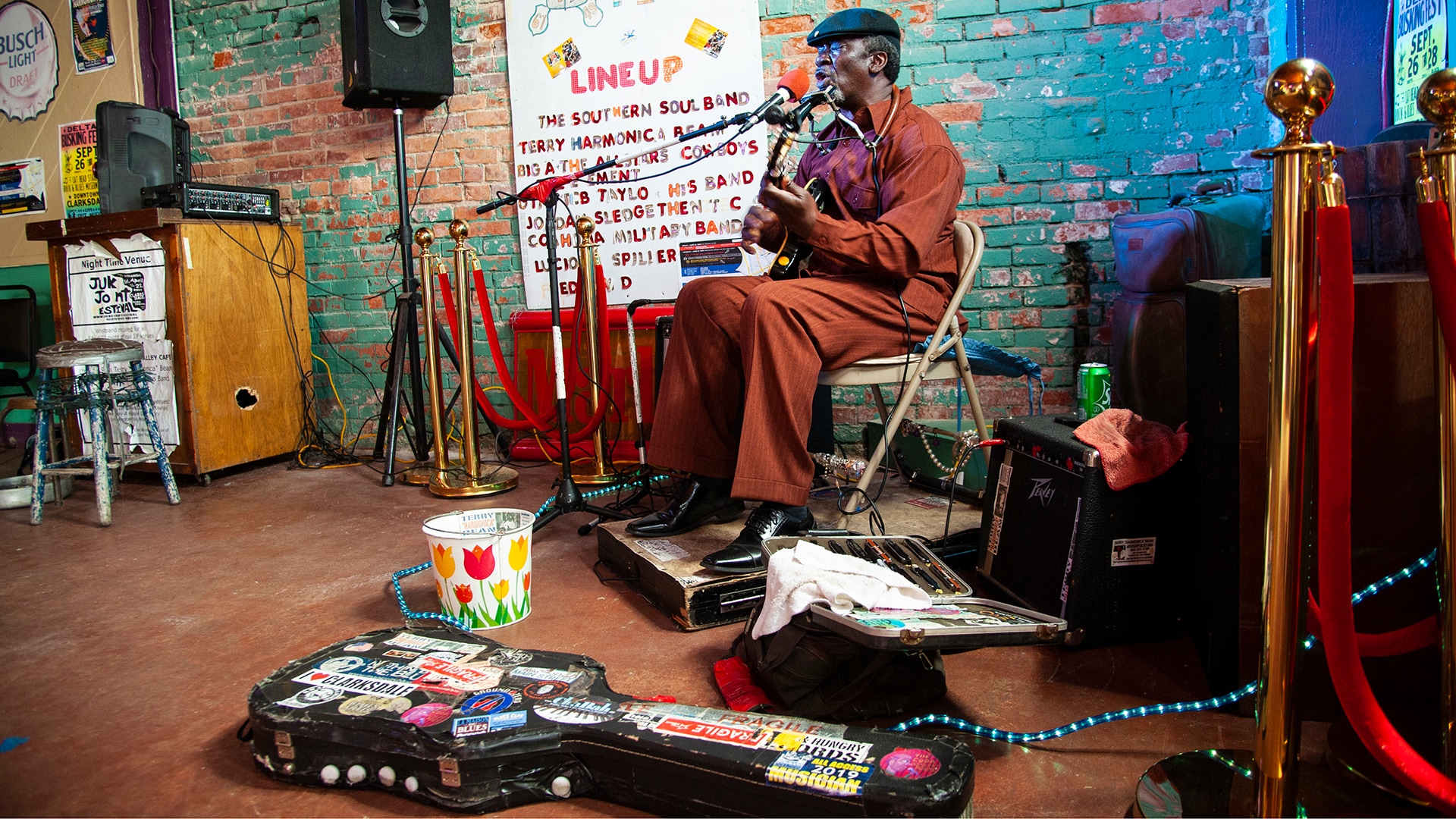Road Trip Along Mississippi’s Blues Trail
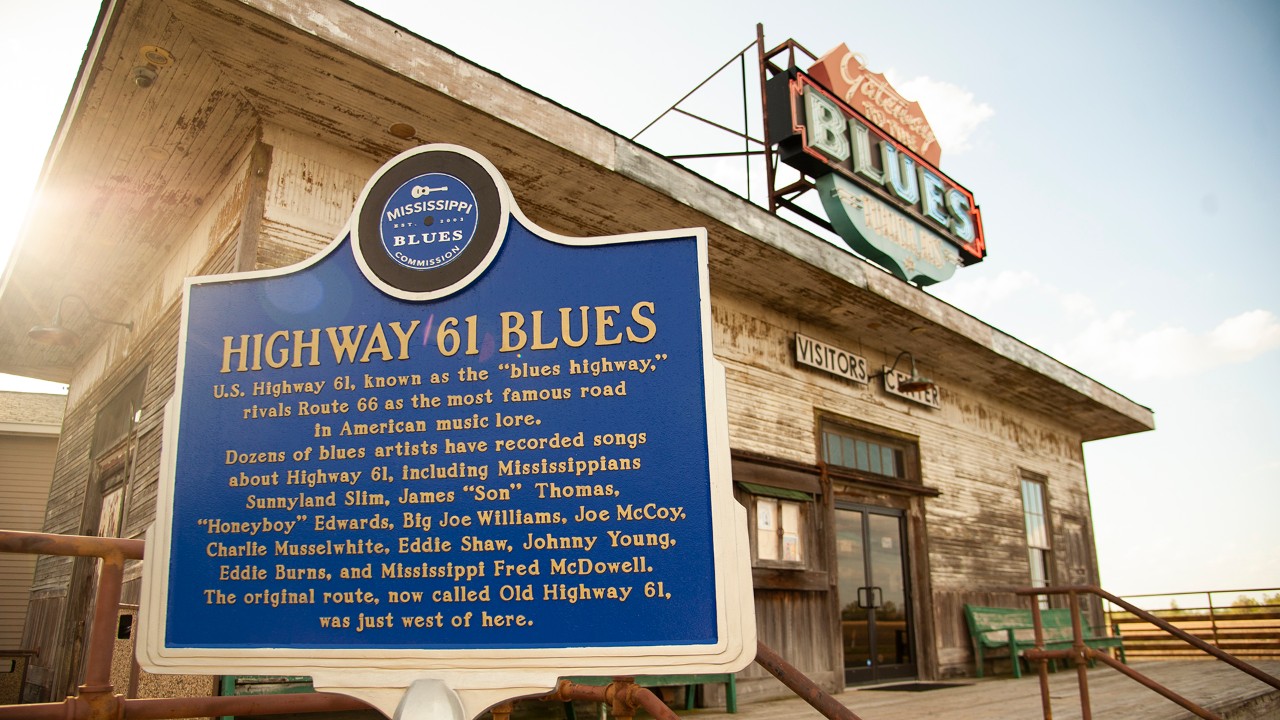
The Gateway to the Blues Museum in Tunica is often the first stop on a driving tour of Highway 61 and the Mississippi Blues Trail.
Story and photos by Joe Rogers
Joe is a travel writer and photographer based in Denver. See more of his work at The Travelin' Joe or on Instagram.
Music lovers and history buffs love these foot-stompin’ stops in the Delta.
Everything has an origin story. For the blues, the story starts in the Mississippi Delta. The various song forms first heard in the spirituals and fieldworkers’ chants common throughout the early days of the Deep South evolved into the string-bending, metal slide guitar phenomenon that empowered people to persevere in the face of oppression. The distinct sound, rich in emotion and style, eventually spread throughout the country and played a pivotal role in shaping American popular music.
Some 200 interpretive trail markers are posted along the Mississippi Blues Trail, an intertwining network of highways and backroads that extend across five regions of the state. The markers guide visitors to museums, lively music venues and historic attractions all related to the birth, growth and influence of the music. The direction you take and the stops you make — much like an improvisational blues solo — is up to you.
At 20, I bought a guitar to learn the styles of Muddy Waters and B.B. King, two legends from the Mississippi Delta. So on a recent drive from Memphis to New Orleans, I eagerly explored the region that gave rise to the blues and inspired these masterful musicians. Here are a few places you might want to add to your own Blues Trail itinerary as you travel through the Mississippi Delta.
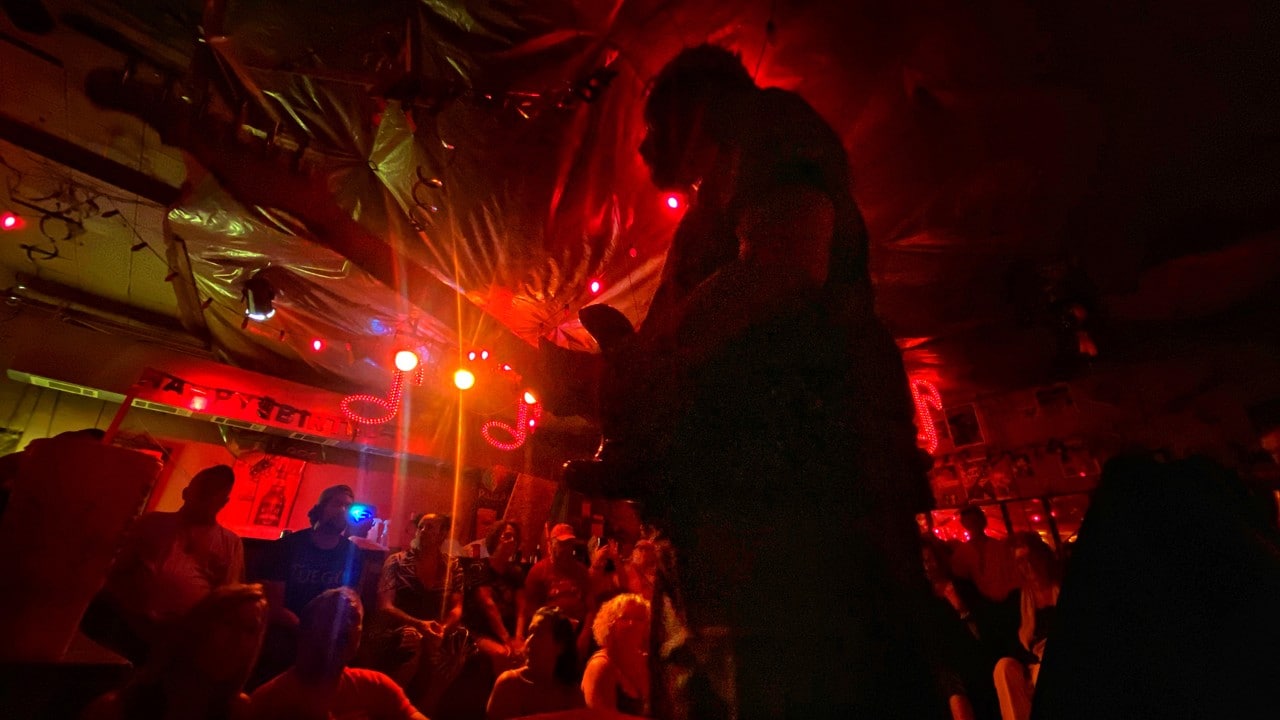
Lucious Spiller jams inside Reds Lounge in Clarksdale.
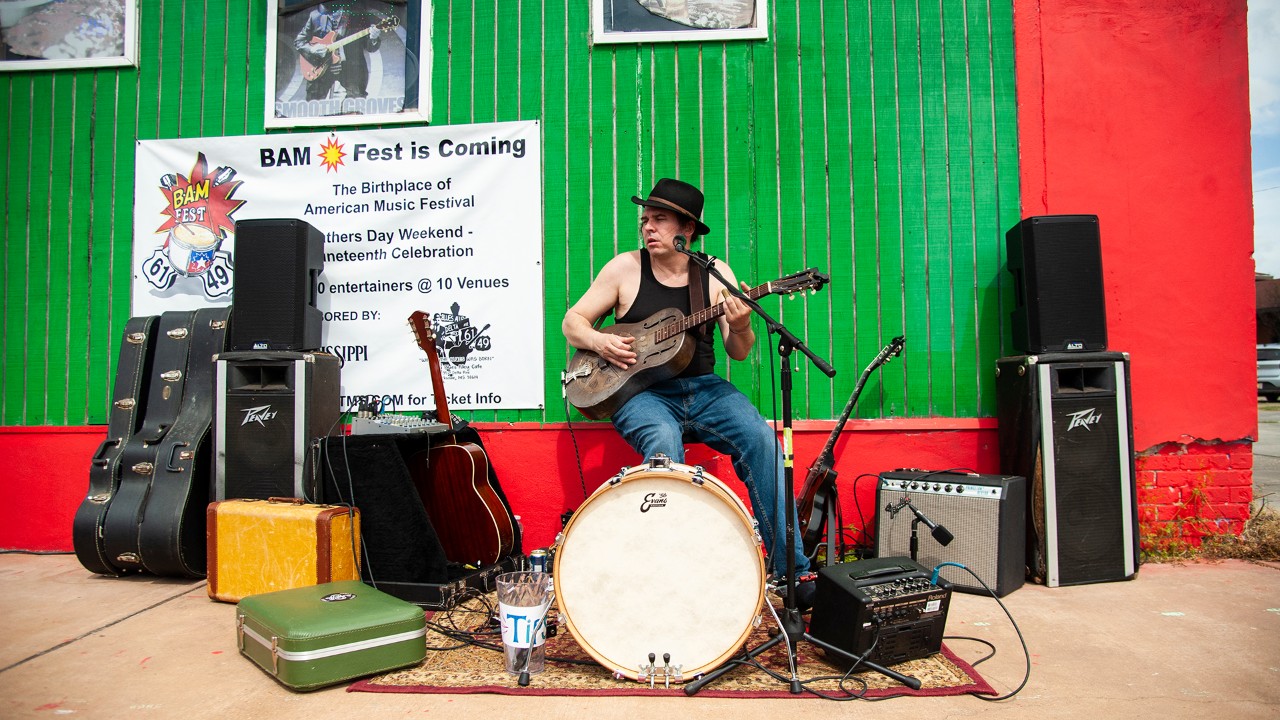
Tom Spielbauer puts his passion into playing music in Clarkdale.
Clarksdale: A Blues Hub
Eighty miles south of Memphis is Clarksdale, a central hub of blues culture since the 1920s thanks to its location on what’s known today as the Blues Highway. History buffs will read all about that at the award-winning Delta Blues Museum, located in a former train depot. Looking for live music? Head for the Arts and Culture District any night and try the Ground Zero Blues Club or Red’s Lounge, one of the last remaining true juke joints. A juke joint, if you’ve missed out, is a lively roadhouse with music, dancing and drink.
At the intersection of Highways 61 and 49, you’ll find The Crossroads, marked with a monument adorned with a trio of guitars. Legend has it that in the early 1930s, a lackluster guitarist named Robert Johnson sold his soul to the devil in exchange for a formidable new style and a mastery of the blues. After a brief five-year career, Johnson died, leaving behind a great story and haunting songs, including “Hellhound on My Trail.”
Tutwiler: Remembering W.C. Handy
From The Crossroads, head southeast to Tutwiler, 15 miles away on Highway 49. Though it may appear to be just another small town, music history buffs know this is where W.C. Handy encountered the blues around 1903.
According to Handy, he was dozing at the railway station while waiting for a train when he was awakened by a man nearby playing slide guitar with a knife, singing “Goin’ Where the Southern Cross the Dog.” Handy said it was the weirdest music he’d ever heard, but “the tune stayed in my mind.” He later published “Yellow Dog Blues,” an adaptation of what he’d heard that night, earning him the title “Father of the Blues.”
Today, the train station is gone but visitors can sit on a bench along its old concrete pad and pay homage to Handy’s chance encounter.
Dockery: Birthplace of the Blues
Although the blues’ exact origins are lost to time, historians regard Dockery Farms, a cotton plantation founded in 1895, as its likely birthplace. Located on Highway 8, Dockery Farms is just 10 minutes east of Cleveland. From about 1910 to 1940, the large concentration of people living and working here — roughly 3,000 at one point — made it an incubator for blues pioneers such as Charly Patton (aka the “Father of the Delta Blues”), Howlin’ Wolf and Robert Johnson.
Like them, other traveling musicians played here on Saturdays, gathering on the front porch of the commissary by day, and inside the Frolicking House — a sharecropper’s home cleared of furniture — by night. For 25 cents a head, musicians would jam all night, earning more money than they could working in the fields. Today, six buildings remain at the farm, and music playing from inside the old cotton storage shed gives the place quite a dramatic aura.
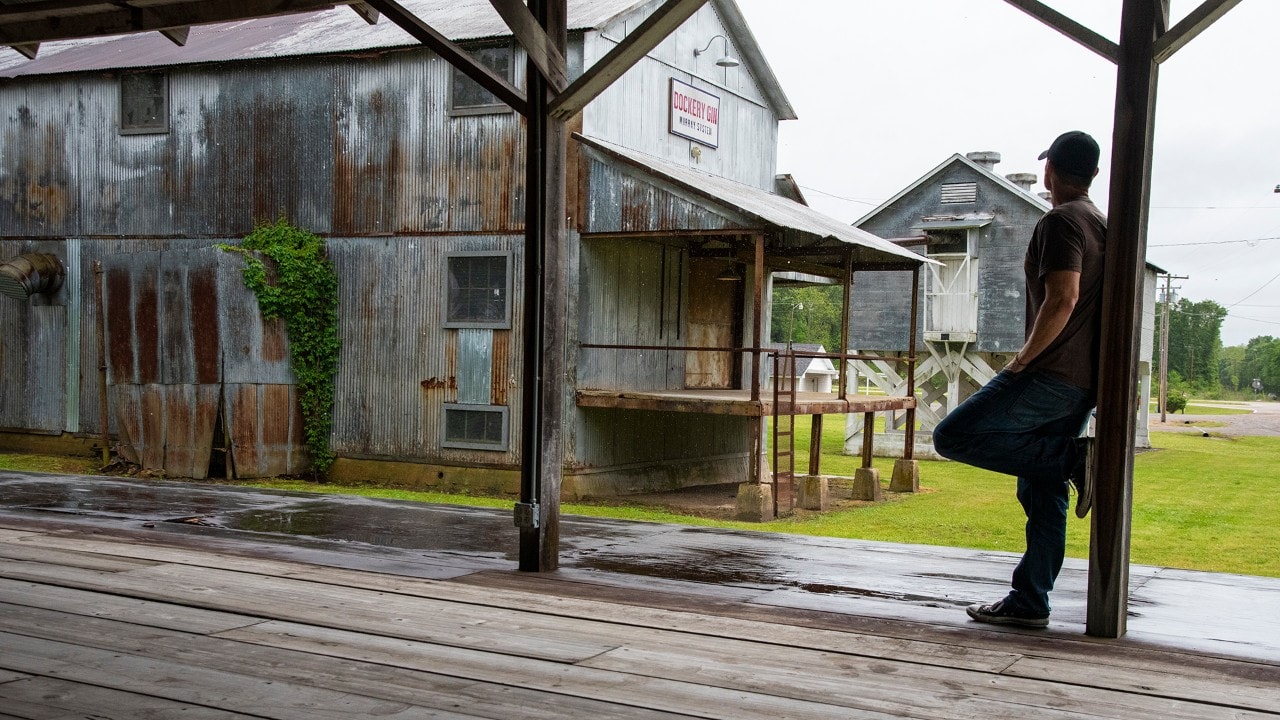
The author explores Dockery Farms, the birthplace of the blues
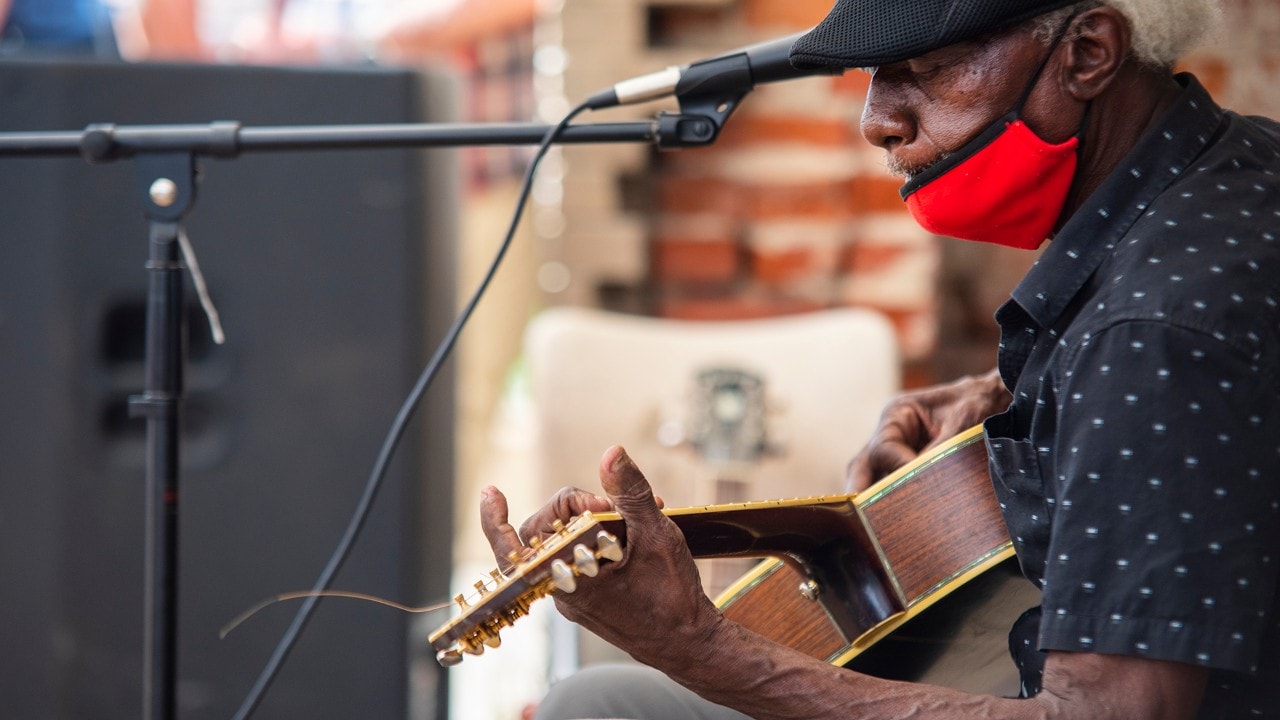
Jimmy "Duck" Holmes performs outside of the Cat Head record store in Clarksdale.
Indianola: B.B. King’s Adopted Home
Thirty miles south of Dockery on Highway 49W is the town of Indianola. B.B. King considered this his hometown after he moved there with his family as a teenager. Just a few blocks from Club Ebony — where King loved to play and later purchased to preserve — sits the impressive B.B. King Museum and Delta Interpretive Center, which celebrated the opening of a multimillion-dollar expansion in the summer of 2021.
Inside, King’s illustrious career is displayed through video presentations, photos and exhibits that weave his life story with that of the Delta’s rich musical history. In a quiet moment after my self-guided tour, I sat near his final resting place outside the museum and tipped my cap to him.
Bentonia: The Blue Front Cafe
Grammy nominee Jimmy “Duck” Holmes owns and operates the Blue Front Cafe, a historic, no-nonsense cinderblock juke joint in Bentonia, an hour’s drive southeast of Indianola on Highway 49. Said to be the oldest operating juke joint in the world, the Blue Front draws blues enthusiasts from around the world.
Holmes’ parents opened the place in 1948, he told me during my visit. These days, Holmes is the last of the Bentonia-style bluesman, “or so they tell me,” he said. Known for his haunting and hypnotic style, he plays on Friday nights. In June, Holmes welcomes as many as 10,000 fans to the annual Bentonia Blues Festival, which just celebrated its 50th year.
Maybe I’ll see you there next summer?
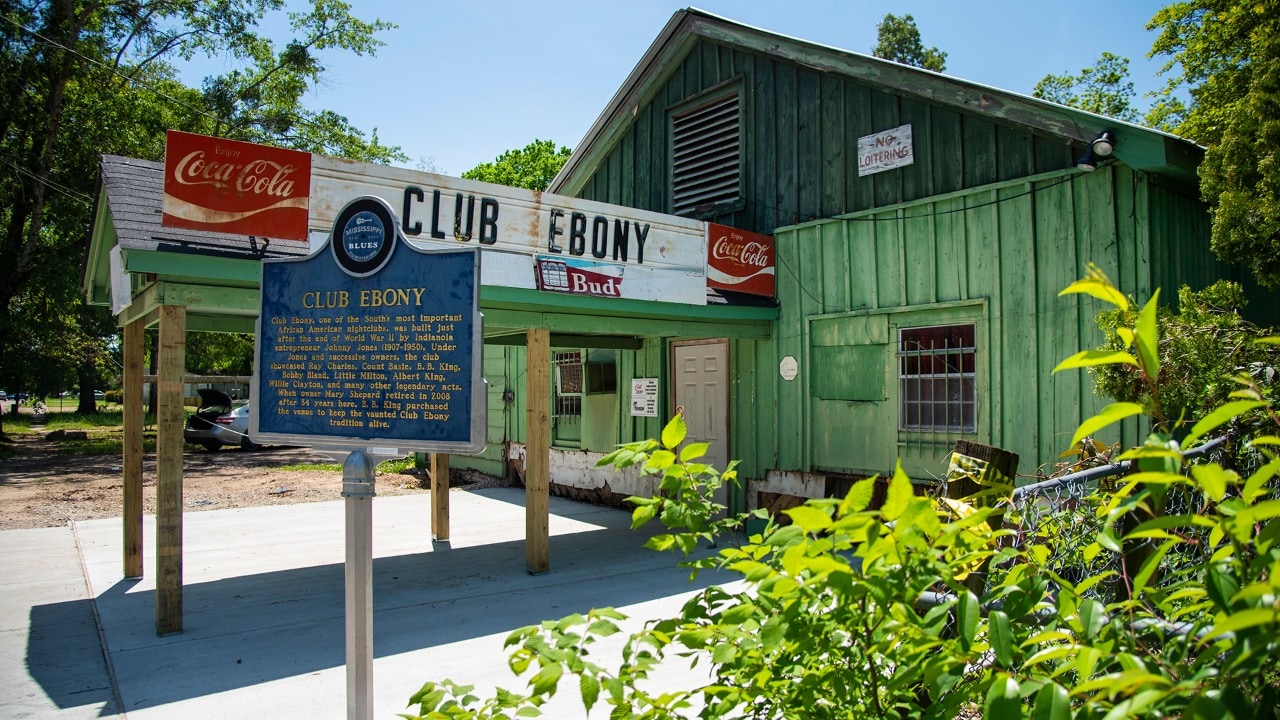
Club Ebony showcased legendary acts such as B. B. King, James Brown and Ray Charles
Related
Read more stories about the Great River Road drive.
- The Great River Road: Minnesota to Missouri
- The Great River Road: Missouri to Louisiana

